
Tibetan children in traditional costumes play backstage before their performance for the opening ceremony of the Third China Tibet Tourism and Culture Expo in Lhasa, Tibet Autonomous Region, China, 10 September 2016. China is heavily promoting tourism in the region as it plans to attract 24 million tourists this year and 35 million by 2020. It opened the weeklong Third China Tibet Tourism and Culture Expo on 10 September 2016 inviting more than 400 overseas guests including ambassadors, diplomats and merchants from all over the world. (Photo by How Hwee Young/EPA)

Performers in Tang dynasty costumes and a Buddha statue on a carriage in a scene from large scale performance “Princess Wencheng” in Lhasa, Tibet Autonomous Region, China, 11 September 2016. “Princess Wengcheng” is a large scale outdoor performance featuring the Tang dynasty Chinese princess who married King Songtsen Gampo and was credited with bringing Buddhism and Chinese civilization to Tibet in the 7th century. (Photo by How Hwee Young/EPA)
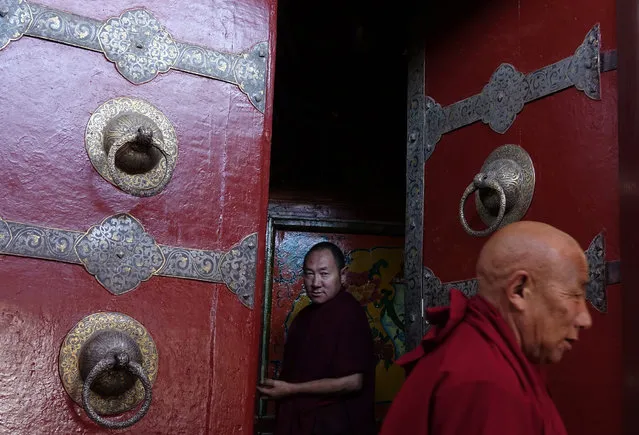
Tibetan monks enter the Jokhang Temple in Lhasa, Tibet Autonomous Region, China, 10 September 2016. Jokhang Temple is considered one of the most sacred site for Tibetan buddhists built during the rule of King Songtsen Gampo in the 7th century. (Photo by How Hwee Young/EPA)
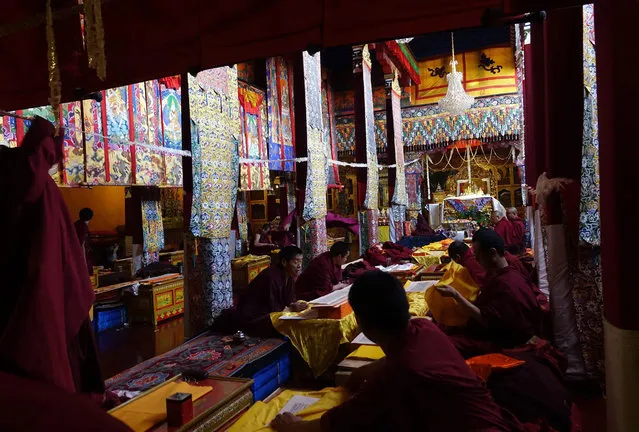
Tibetan monks pray inside the Jokhang Temple in the early morning in Lhasa, Tibet Autonomous Region, China, 10 September 2016. Jokhang Temple is considered one of the most sacred site for Tibetan buddhists built during the rule of King Songtsen Gampo in the 7th century. (Photo by How Hwee Young/EPA)
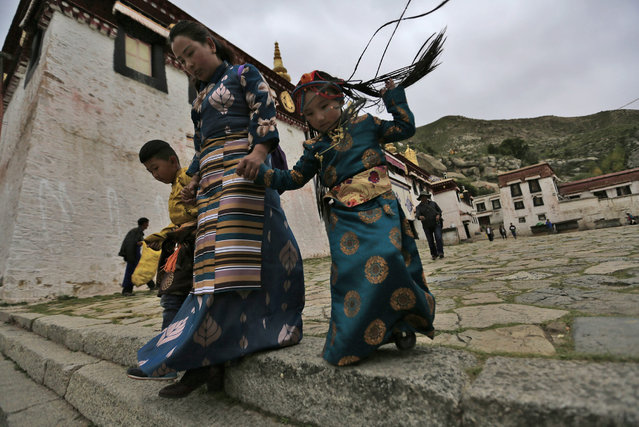
Tibetan pilgrims walk outside the Sera Monastery in Lhasa, Tibet Autonomous Region, China, 11 September 2016. Sera Monastery is known as one of the “great three” Gelug university monasteries of Tibet founded in 1419. (Photo by How Hwee Young/EPA)
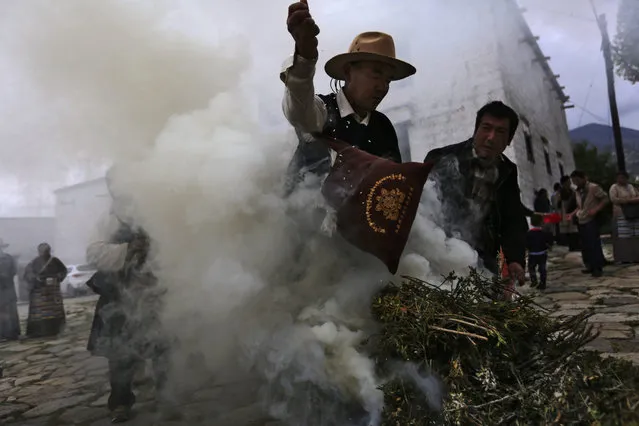
Tibetan pilgrims make incense offerings on a bonfire outside the Sera Monastery in Lhasa, Tibet Autonomous Region, China, 11 September 2016. (Photo by How Hwee Young/EPA)
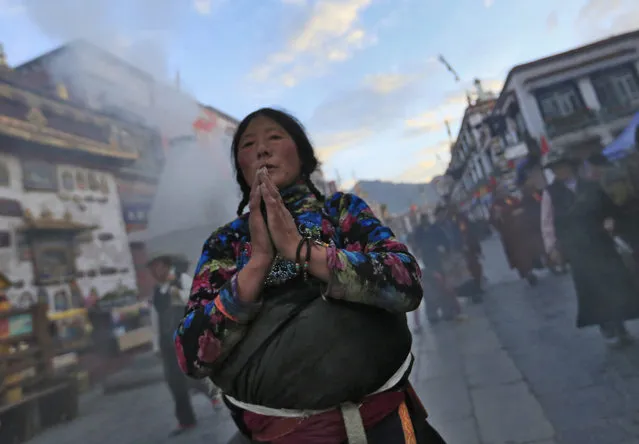
A Tibetan pilgrim prays outside the Jokhang Temple in the early morning in Lhasa, Tibet Autonomous Region, China, 10 September 2016. Jokhang Temple is considered one of the most sacred site for Tibetan buddhists built during the rule of King Songtsen Gampo in the 7th century. (Photo by How Hwee Young/EPA)
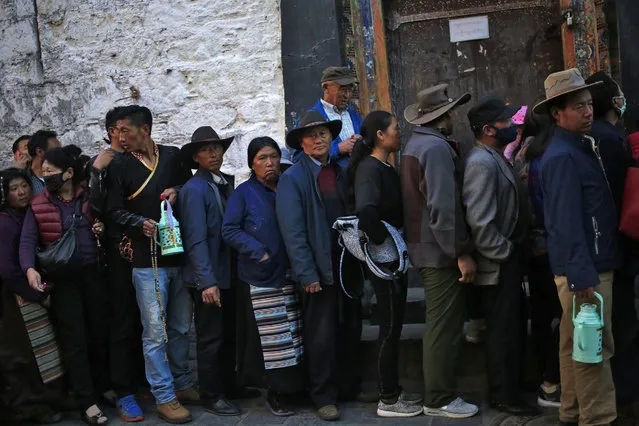
Tibetan pilgrims queue to enter the Jokhang Temple in the early morning in Lhasa, Tibet Autonomous Region, China, 09 September 2016. (Photo by How Hwee Young/EPA)
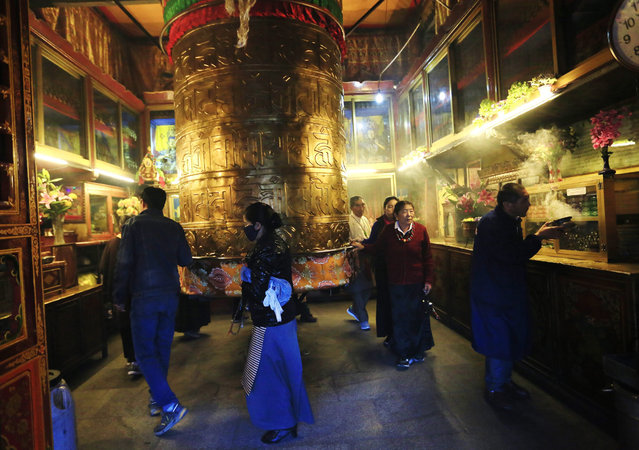
Tibetan pilgrims walk around a Buddhist prayer wheel in the Jokhang Temple in the early morning in Lhasa, Tibet Autonomous Region, China, 09 September 2016. (Photo by How Hwee Young/EPA)
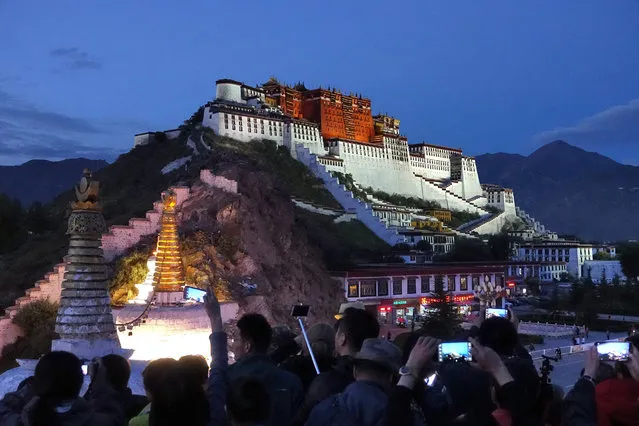
Tourists take photos of the Potala Palace in Lhasa, Tibet Autonomous Region, China, 09 September 2016. The famous Potala Palace used to be the main residence of the Dalai Lama but is now a preserved as a museum and world heritage site. (Photo by How Hwee Young/EPA)
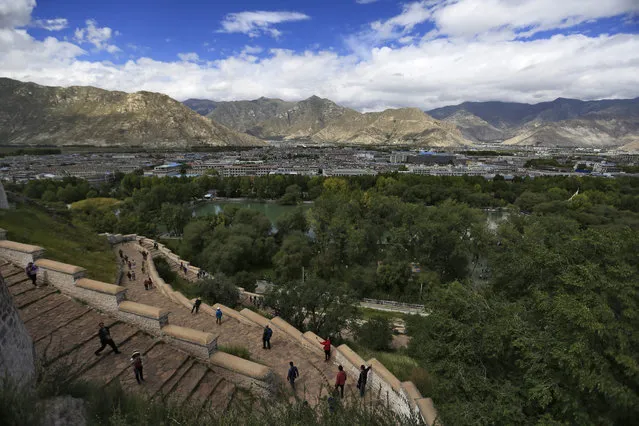
Tourists on the steps of the Potala Palace overlooking Lhasa city in Tibet Autonomous Region, China, 11 September 2016. (Photo by How Hwee Young/EPA)
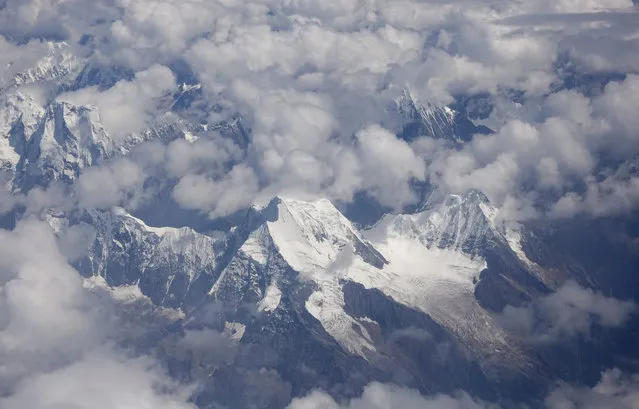
An aerial view from a plane of the snow capped mountains over the Tibet Autonomous Region of China, 09 September 2016. Known as the “Roof of the World” with an average elevation of 4,900 metres, Tibet, or the Tibet Autonomous Region of China, is home to some of the world's highest and largest mountains and plateaus. (Photo by How Hwee Young/EPA)
22 Sep 2016 09:59:00,
post received
0 comments
